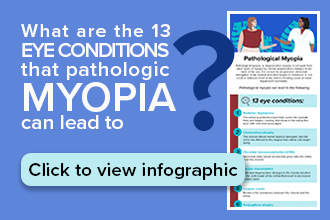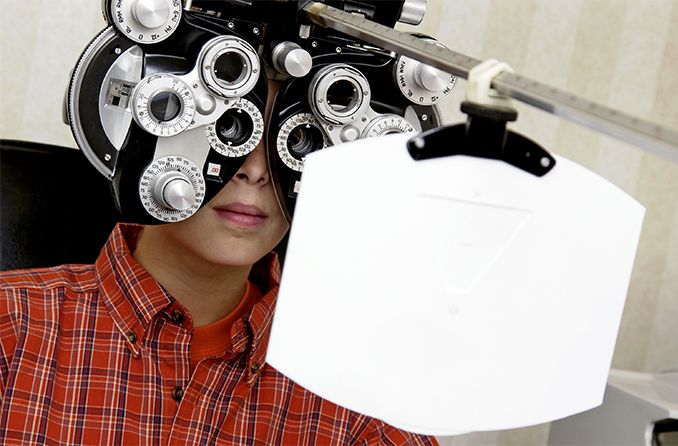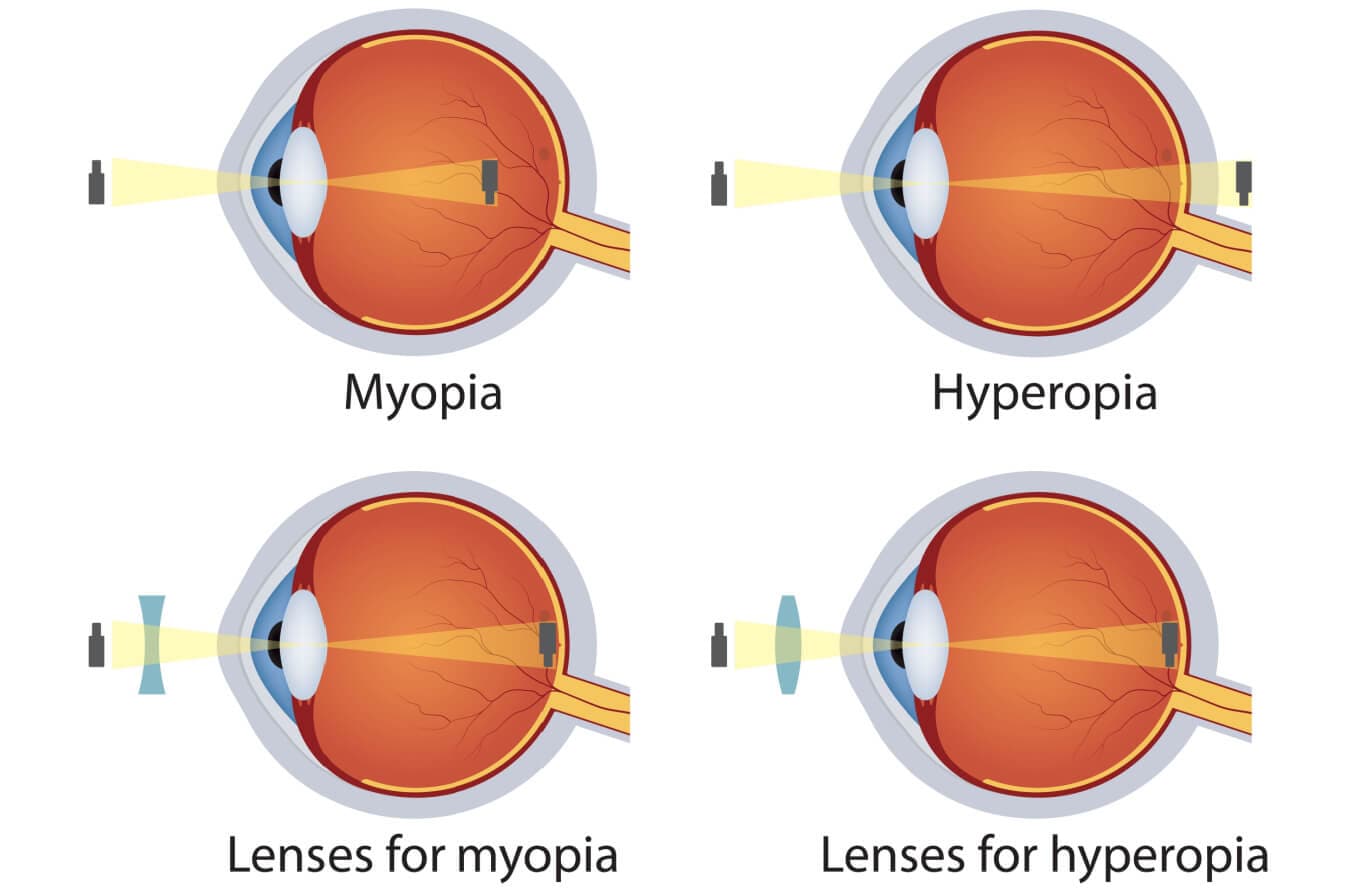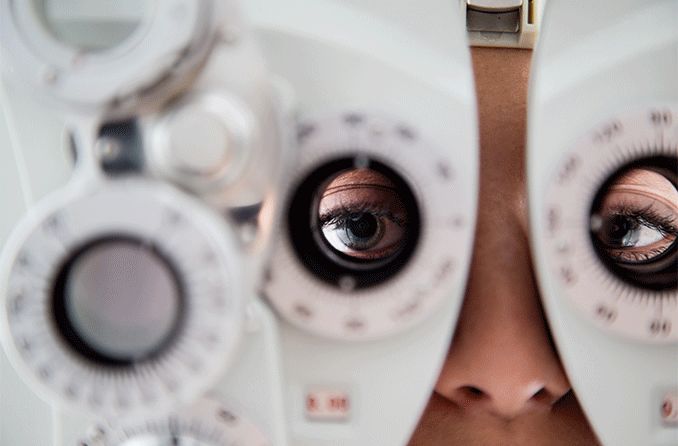What is pathologic myopia?
Pathologic myopia is characterized by the presence of degenerative damage in the eyes. It is often the result of high myopia but can also occur in eyes that have not progressed to high myopia. Pathologic myopia (formerly myopic degeneration ) is less common than high myopia and can lead to blindness.
Myopia (nearsightedness) is a common refractive error that makes faraway objects look blurry. Progressive myopia is nearsightedness that gets worse year after year. High myopia is a severe degree of nearsightedness. It can also lead to serious eye complications and blindness.
Pathologic myopia is not a degree of nearsightedness. It is a form of myopia that is diagnosed if specific types of degenerative damage develop at the back of the eye.
Degenerative means that the damage is progressive and reduces the tissues' ability to function. This is why pathologic myopia used to be called myopic degeneration or degenerative myopia.
SEE RELATED: Why myopia progression is a concern
Causes of pathologic myopia
Pathologic myopia (degenerative myopia) only affects about 3% of the world’s population. However, like nearsightedness, it is often present from early childhood.
It is considered to be hereditary, but the hereditary pattern is not fully understood yet.
Myopia and progressive myopia are primarily caused by the eyes growing too long. This growth can eventually cause the retina and other tissues in the back of the eyes to stretch and become weak.
This is what can lead to degenerative damage and serious eye conditions. For pathologic myopia , this includes:
Myopic maculopathy – Leaking blood vessels and changes in the macula area
Peripapillary atrophy – Thinning of the retina around the optic nerve
Chorioretinal atrophy – Thinning of the retina that results in cell death
Choroidal neovascularization (CNV) – Leaking choroidal blood vessels growing onto the retina
Lacquer cracks – Breaks in the membrane between the choroid and retina
Fuchs spots – Scarring at the macula
The complications found with high myopia may also be found in pathologic myopia:

Click here to view infographic
Signs and symptoms
Pathologic myopia produces symptoms related to the damage at the back of the eye:
Reduced vision even with vision correction
Straight lines appear wavy
Blind spots in areas of central vision
Difficulty with tasks like reading, driving or cooking due to vision distortion

Diagnosis and treatment
An eye doctor can diagnose pathologic myopia with a comprehensive eye exam that includes a retinal exam.
There is no cure for pathologic myopia, but there are ways to manage its complications.
For some people, eyeglasses and contact lenses can help correct extreme nearsightedness. However, some people still have reduced vision, even with the best possible corrective lenses. They may require low vision care and rehabilitation.
The treatments for the degenerative damage of pathologic myopia focus on reducing further damage to the retina. These treatments include:
Photodynamic therapy
LEARN MORE: Can myopia be cured?
Can LASIK correct pathologic myopia?
LASIK and other laser eye surgery can only be performed to correct a stable prescription. With pathologic myopia, a prescription may not ever become stable.
When to see an eye doctor
Everyone with any degree of myopia should have regular eye exams. But pathologic myopia causes rapid changes to the eye, so it typically requires more frequent checkups.
See your eye doctor right away if you experience any of these symptoms:
Your vision becomes noticeably more blurry.
You notice any blind spots in your vision.
You have new or sudden floaters and flashes.
Anna Barden also contributed to this article.











